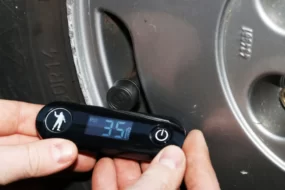Steering Wheel Vibration Diagnose and fix vibration issues Driving should be a smooth and comfortable experience, but when you start feeling vibrations through the steering wheel, it can be both annoying and concerning. Steering wheel vibrations can stem from various sources, ranging from minor issues to more complex problems. In this article, we’ll explore the common causes of steering wheel vibration and discuss how to diagnose and fix these issues.
Understanding Steering Wheel Vibration
Steering wheel vibrations are often an indication that something is amiss with your vehicle. Identifying the root cause is crucial for maintaining both the performance and safety of your car. One of the primary reasons for steering wheel vibrations is uneven weight distribution among the tires. When the wheels are not balanced correctly, it can lead to vibrations, especially at certain speeds.
Wheel Misalignment:
If your wheels are not aligned properly, it can result in uneven tire wear and steering wheel vibrations. Misalignment can be caused by hitting potholes, curbs, or other road hazards. Worn-out or damaged tires can contribute to steering wheel vibrations. Check for irregular tire wear, bulges, or flat spots. Rotating and properly inflating your tires can prevent such issues. Proper tire care is like giving your car’s feet a spa day! It’s all about pampering those wheels and making sure they’re in sync.
Brake Problems:
Brake issues, such as warped brake rotors or uneven brake pad wear, can lead to vibrations when applying the brakes. A faulty suspension system, including worn-out shocks or struts, can cause vibrations. Inspect the suspension components regularly and replace any worn parts. Brake and suspension issues can really throw a wrench into smooth driving. Regular inspections and prompt replacements are the unsung heroes of a well-functioning vehicle.
Drivetrain Issues:
Problems in the drivetrain, such as a worn-out CV joint or a damaged axle, can result in vibrations. These issues are often accompanied by clicking or clunking sounds during turns. Loose or damaged steering components, such as tie rods or ball joints, can contribute to steering wheel vibrations. Now that we’ve identified potential causes, let’s discuss how to diagnose steering wheel vibrations:
Check Tire Balance:
Visit a reputable auto shop to balance your tires. Balancing involves redistributing weight around the tire to ensure even wear and a smoother ride. Have a professional check and adjust your wheel alignment. This will help prevent uneven tire wear and eliminate steering wheel vibrations caused by misaligned wheels. Check your brakes for issues such as uneven wear or warped rotors. Replace brake pads and rotors as needed to maintain a smooth braking experience.
Suspension System Check:
Inspect the suspension components for wear or damage. Replace shocks, struts, and other worn-out parts to improve ride quality and eliminate vibrations. If you suspect drivetrain issues, have a mechanic inspect the CV joints, axles, and other drivetrain components. Addressing these problems promptly can prevent further damage. So, the next time you feel that subtle shake in your steering wheel, don’t hesitate to investigate and address the root cause—it’s a small investment for a smoother journey on the road.
Steering Components Inspection:
Check for loose or damaged steering components. Tighten or replace any parts as necessary to ensure a stable and vibration-free driving experience. Once you’ve identified the root cause of the vibrations, it’s time to address and fix the issues: For complex issues like drivetrain problems or major suspension faults, it’s advisable to seek professional assistance. A skilled mechanic can diagnose and repair these issues effectively.
DIY Fixes:
Some issues, such as wheel balancing or tire rotation, can be addressed at home with basic tools. Follow manufacturer guidelines and safety precautions if you choose to tackle these tasks yourself. Implement a routine maintenance schedule for your vehicle. Regularly check and service components like tires, brakes, and the suspension system to prevent steering wheel vibrations. Don’t ignore minor vibrations, as they can escalate into more significant problems over time. Addressing issues promptly can save you money on repairs and ensure a safer driving experience.
Conclusion
Steering Wheel Vibration are a clear indication that something in your vehicle needs attention. By understanding the common causes, diagnosing the issues, and implementing timely fixes, you can enjoy a smoother and safer ride. Whether you opt for professional assistance or tackle some tasks yourself, prioritizing the health of your vehicle ensures a more enjoyable and trouble-free driving experience. Remember, when it comes to vehicle maintenance, prevention is key. Regular inspections and proactive repairs can go a long way in preserving the performance and longevity of your car.







